Directed by Rene Manzor; Written by Reg Gadney; Starring Corey Carrier, Lloyd Owen, Ruth de Sosa; Margaret Tyzack, Lukas Haas, Danny Webb
When this episode first aired on television, it was known as Paris, September 1908, but since it was combined with British East Africa, 1909, to create the two-hour Passion for Life, the time period shifted to 1909. A transition scene created for the DVD release shows Indy and his parents briefly discussing their African trip and their next stop in Paris.
But soon after they arrive, Indy’s parents bid adieu, having been invited by friends to visit the wine country. Their departure leaves Indy in Miss Seymour’s hands, and they start with a visit to the Louvre. Miss Seymour is far more captivated by the art than Indy is, at least until they meet a young artist named Norman Rockwell (Lukas Haas).
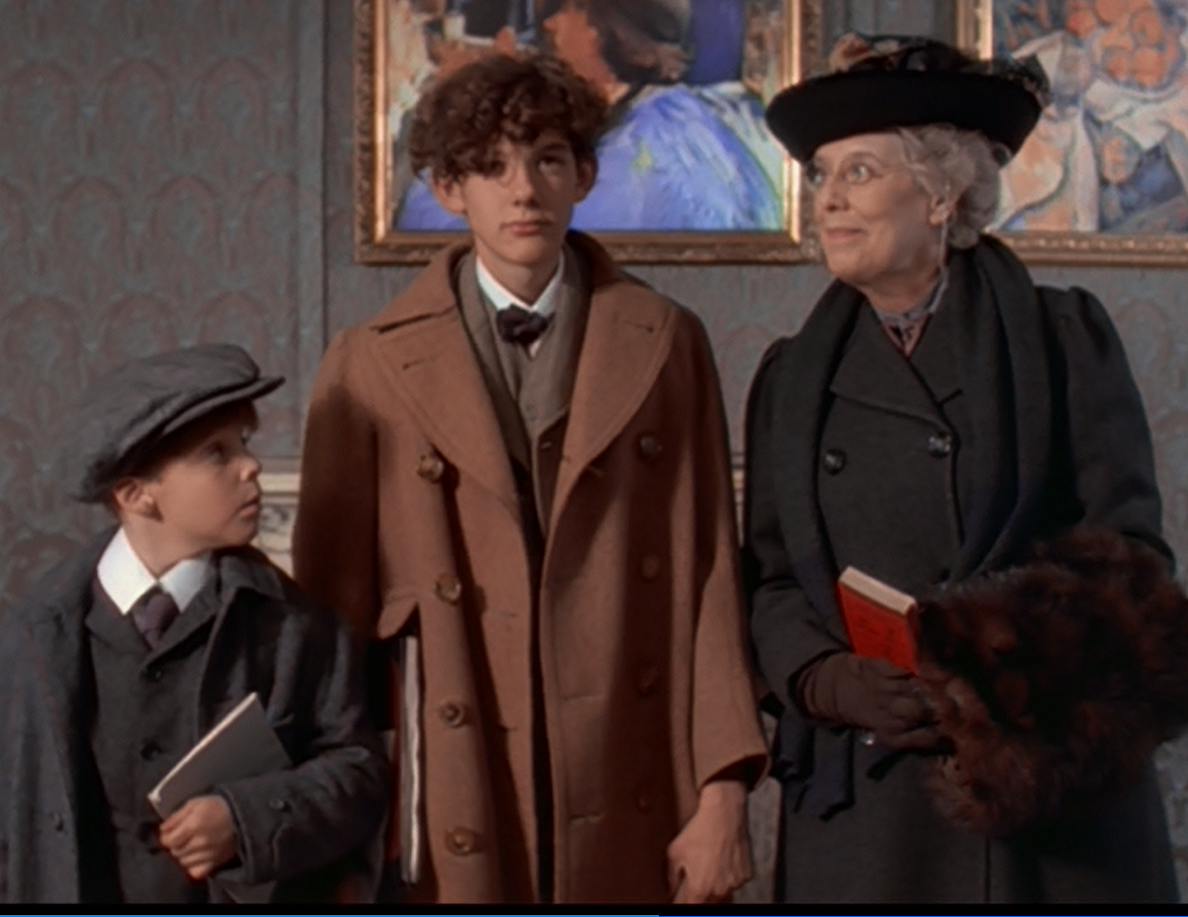
Miss Seymour takes the boys to a puppet show, thinking that is more up their alley, but they are bored out of their minds. They manage to convince Miss Seymour they’ll stay for the second show, however, and she leaves to write letters. But they sneak away and wander the streets, stopping in an art store for supplies and then passing some prostitutes who ask Indy if he wants to spend time with them. Naively, Indy answers in the affirmative, but Norman ushers him into the Le Lapin Agile restaurant. Norman notices Edgar Degas studying another artist’s artwork at a nearby table, and the two men are debating its merits. Degas tells the other artist he can’t tell if the work is of a woman or cow. The artist, as it turns out, is none other than Pablo Picasso. Picasso says he can paint as well as Degas, and the older artist storms out. Rockwell defends Degas, and Picasso invites him and Indy to his studio to witness his talent for themselves.
At his studio, he begins working on a piece of Fernande Olivier, a French artist, model, and Picasso’s first muse, in Degas’ style. Rockwell and Indy learn more about art from Georges Braque, who helped Picasso develop Cubism. Rockwell sketches one of Picasso’s paintings in his sketchbook, and, praising it, Picasso signs the work.
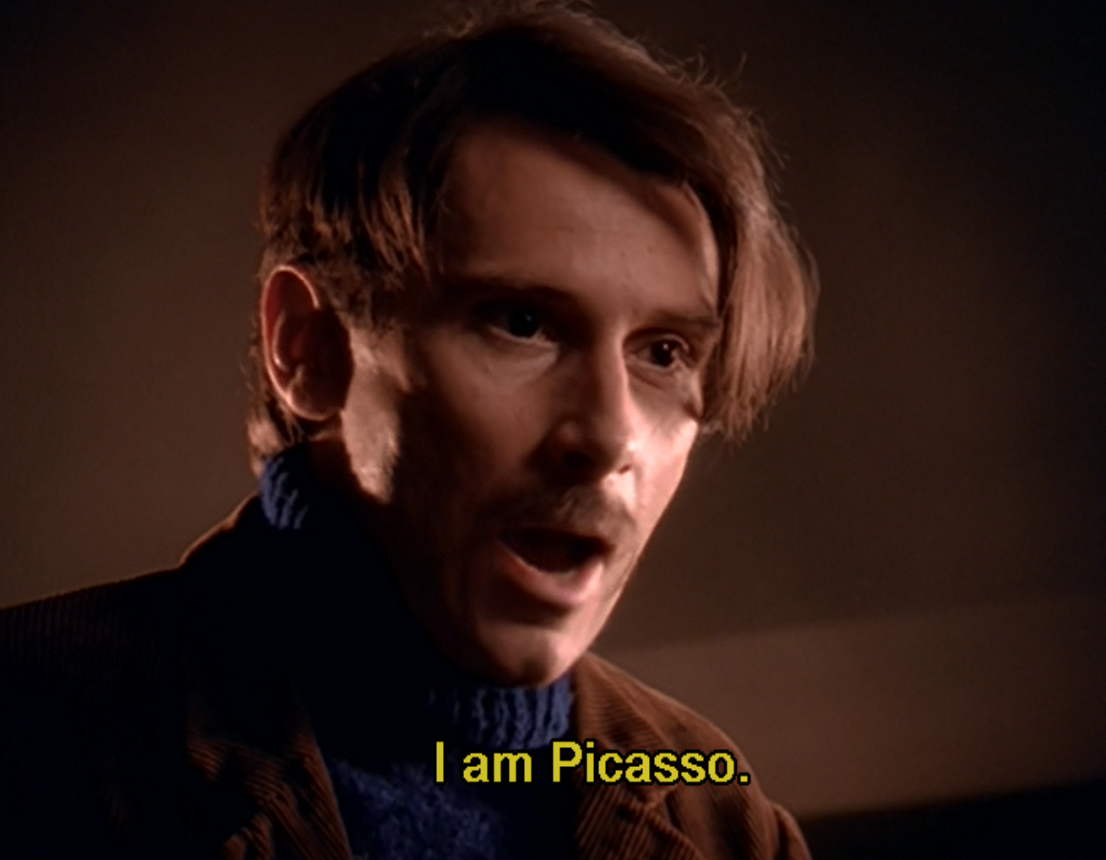
Then, they approach a restaurant featuring can-can dancers, and Picasso invites prostitutes from the nearby brothel to join them. Fernande dances with Indy, and Rockwell dances with one of the prostitutes. The music that plays over and over is Offenbach’s Can-Can from “Galop Infernal” from Orpheus in the Underworld operetta. Hearing it, I kept adding the lyrics from “The Pitch (Spectacular Spectacular)” from Moulin Rouge, and the music is also used in the Animaniacs song “Be Careful What You Eat,” just to name a couple of songs that found inspiration in the tune.
Meanwhile, Miss Seymour has called the police regarding her missing charge. I think this is the fourth time Indy has disappeared in as many episodes. Poor Miss Seymour! Unfortunately, they were of little help.
Back at the restaurant, two pimps arrive from the brothel, angry that the prostitutes had left the brothel with Picasso. A fight ensues, and Picasso shoots his pistol at the ceiling. The group escapes outside, and the prostitutes bid farewell.
Indy, Rockwell, Picasso, and Fernande finish the evening discussing Leonardo da Vinci and Picasso’s art style. He explains to Indy he’s trying to give spirit form. “Magic. Turn one thing into another. That’s what I do.”
Then Picasso says goodnight, but not before inviting him to his party the following evening. Then, the two pimps show up again, and they chase Indy and Rockwell into a nearby cemetery, where Indy scares them away with the night watchman’s blanket and a skull rigged to look like a ghost.
Indy sneaks back into the apartment, past a sleeping Miss Seymour, and the next morning he pretends to have been hiding in a wardrobe, studying. He produces an essay on da Vinci, but she gives him a stack of books and tells him he has to read all of Les Miserables, which is about 1,500 pages. When she eventually goes to her room to sleep, Indy sneaks out, nearly falling off of the roof.
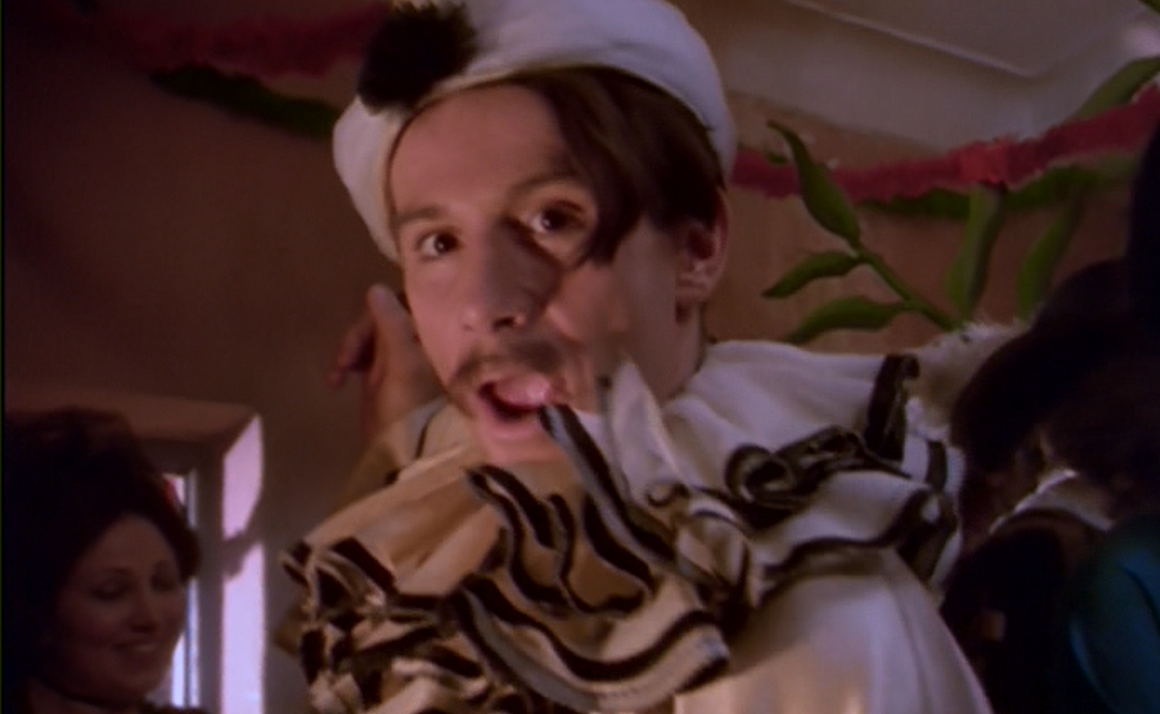
Indy and Norman think they’re attending a grownup party, but it’s a wacky costume party, with Picasso in a harlequin-style costume. The group begs Henri Rousseau, a French post-impressionist painter, to tell a ghost story, but in the middle of his tale, an angry Miss Seymour appears. Picasso raises his gun, and, unperturbed, she tells him to put it down.
The two go into a room, where Indy worries about what they are saying to each other. But Picasso is sketching the tutor. First, in a more conventional style, and then in his Cubist style. She smiles, obviously impressed by both. Picasso tells her that the boys love art and will really understand it if they spend more time with him.
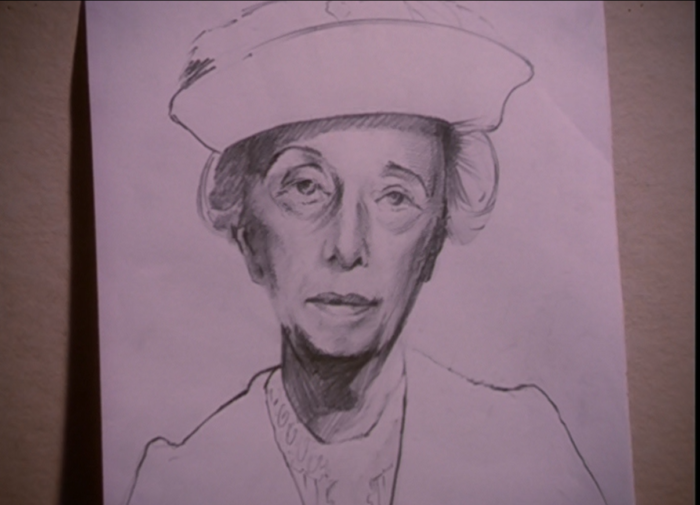
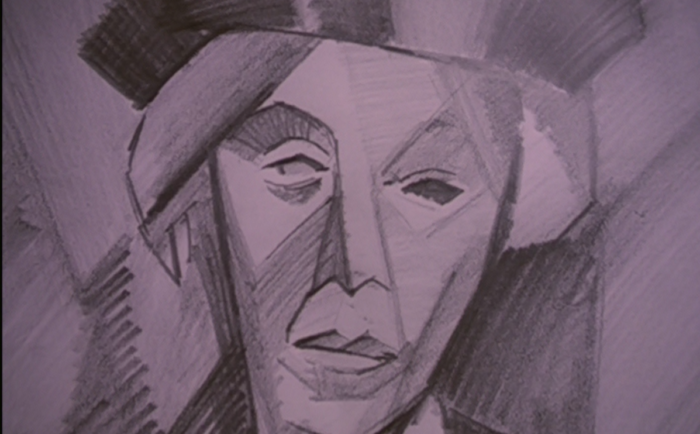
The next day, the group assembles in the restaurant once more. Daniel-Henry Kahnweiler, one of the first champions of Picasso and Braque’s Cubism and a German art historian and art collector, has offered to purchase Picasso’s Degas-style art. Pretending that Degas was the artist, Picasso said that he would sell it, provided he was present when Degas signed it. Kahnweiler agrees, and everyone meets at the Lapin Agile. Struggling with his eyesight, Degas whispers to Indy that the piece doesn’t smell like the pigments he uses, but he signs his name. Picasso seizes the win and loudly announces he is as good as Degas. But Indy and Rockwell refuse to corroborate it is Picasso’s work. Then, Indy produces the Cubist-style drawing that Rockwell did and says it’s as so good only Picasso could have done it. Fernande backs him up, and Picasso reluctantly signs it, and Kahnweiler happily buys both pieces. A Picasso signed by Degas and a Rockwell signed by Picasso.
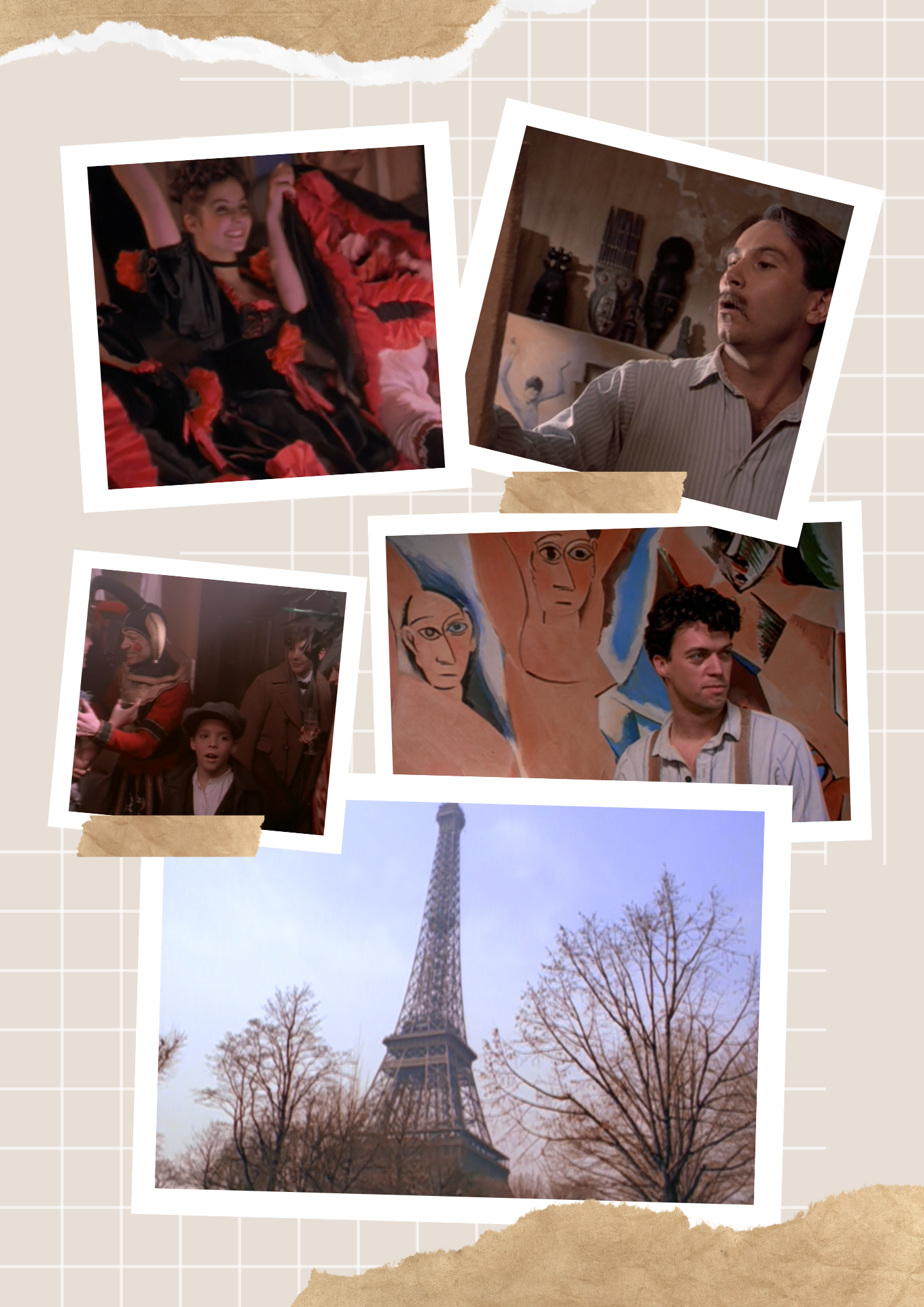
Thoughts
Though I love art, this is not one of my favorite episodes. The mood is all over the place, from wacky brawls to serious art discussions to a scary “ghost” in a cemetery. However, Picasso (Danny Webb) pours his heart into his role, making Picasso a fiery, tempestuous artist, ready to fire a gun into the air at a moment’s notice. His engaging personality and dramatic facial expressions give this episode its soul. His Picasso even charmed Miss Seymour, and that’s not an easy feat!
Related DVD Documentaries
- American Dreams – Norman Rockwell and the Saturday Evening Post
- Art Rebellion – The Making of the Modern
- Edgar Degas – Reluctant Rebel
- Braque & Picasso – A Collaboration Cubed
History
Edgar Degas (1834–1917) French Impressionist known for his oil paintings and pastel drawings of ballet dancers, racehorses, and bathing women. His eyesight deteriorated in his later years.
Pablo Picasso (1881–1973) Spanish painter who spent most of his time in France. Went through several artistic styles and periods, including his Blue Period and a Rose Period, before co-founding Cubism. Notable works include Guernica, Au Lapin Agile, La Vie, and The Old Guitarist.
Norman Rockwell (1894–1978) prolific American painter and illustrator, known for his covers for The Saturday Evening Post. Among his works are Rosie the Riveter, Four Freedoms, and The Problem We All Live With.
Fun Facts
Lukas Haas (Norman Rockwell) appeared with Harrison Ford in the film Witness.
Danny Webb (Pablo Picasso) has been in a multitude of films and television series, including Doctor Who, Sherlock, Alien3, Pennyworth, and The Dig.
Webb also reprises his role in the Barcelona, 1917 episode of Young Indiana Jones.
While Picasso was in Paris around this time period, it’s unlikely Rockwell was. According to the Indiana Jones wiki: “While Rockwell did travel to Paris in the 1920s and encountered Picasso, it is not known whether Rockwell was in Paris in the timeframe of the story. It seems unlikely that a fourteen-year-old Rockwell would appear to be unaccompanied in Paris.”
Steve Martin wrote a play Picasso at the Lapin Agile, an imagined account of Picasso meeting Albert Einstein at the bar.